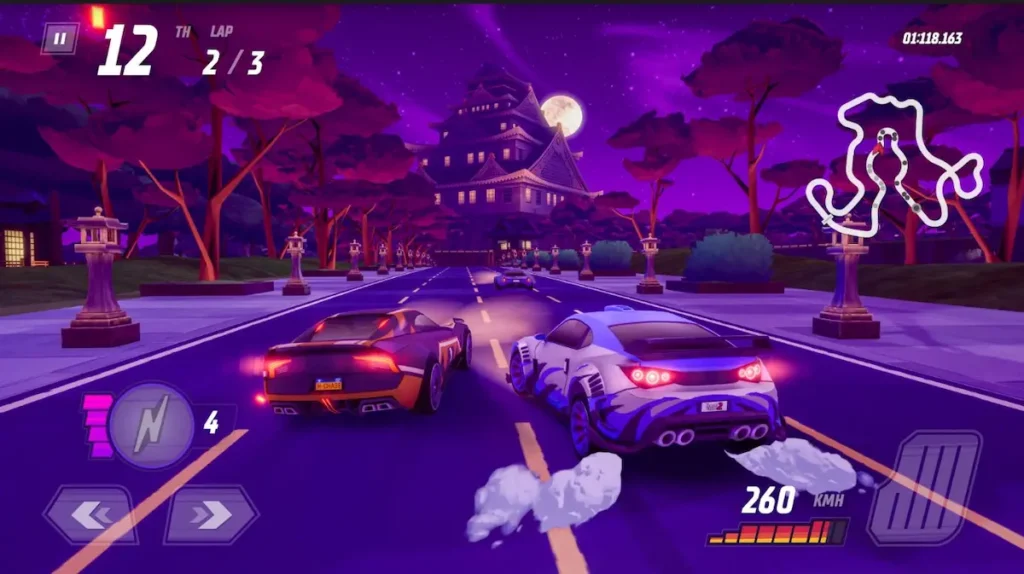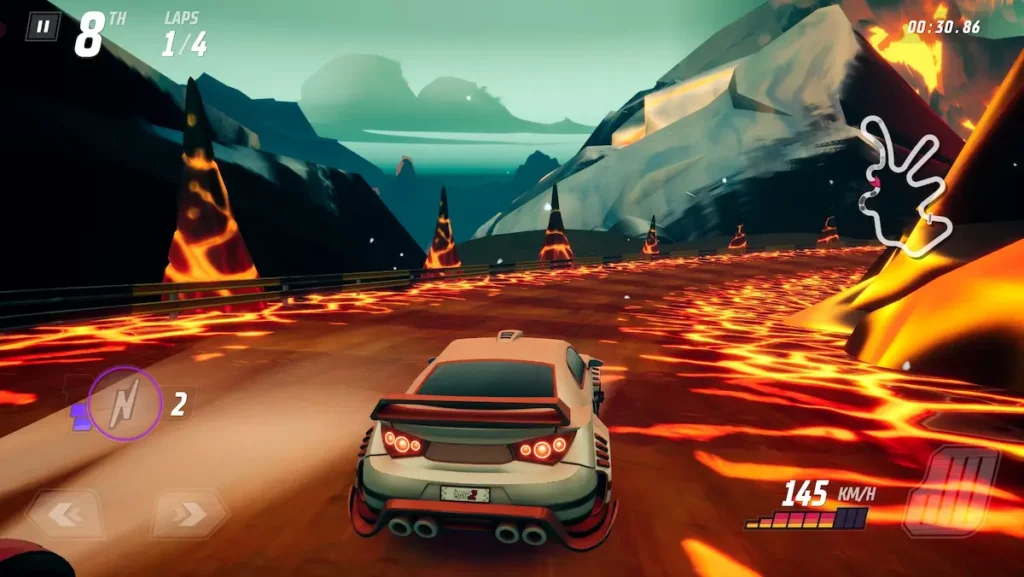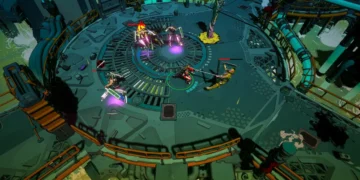With SEGA and Ferrari failed to reconcile and release a new OutRun, the players started a search for alternative arcade racing thrills. Horizon Chase 2 appeared to offer what the players were looking for—blue skies and red sportscars. It does manage to get some of the essence of classic arcade racers, but it also falls short in many areas.
Horizon Chase 2 is a straightforward game that does not demand much from players. It offers a small but stylish collection of cars, ranging from expensive and sleek to those reflecting various world regions in a more characterful manner.
The main single-player mode is a world tour that takes you through countries like Japan, America, and Brazil, among others.
The gameplay follows a standard format with races covering several laps where you chase the top spot, or point-to-point stages that feel more like time trials. The heart of this racer is firmly rooted in the arcades.

On the positive side, the tracks and cars have a charming, cartoony appeal with bold colors and oversized attractions buzzing by at high speed. Each locale is easily differentiated, offering a stylized version of the country it represents.
For example, Japan is furnished with neon signage, towering buildings, and even a Gundam-style statue overlooking a track. These visuals are stunning, even if they pass by quickly.
The cars show a child’s dream vehicles—smooth curves, bright paintwork, and interchangeable parts. But this visual simplicity extends to the gameplay, making the cars overly easy to control.
Regardless of which car you chose, they all felt similar because Horizon Chase 2 tends to hold your hand too much. Throughout the single-player campaign, you will rarely need to use the brake.
Simply turning hard into corners is sufficient to navigate them without worrying about detouring off the road. Crashes are minor setbacks, quickly overcome with the turbo function.
At the start, this ease of play is fun, but it soon becomes so simple that any happiness is drained from the game. Upgrading vehicles only heighten this. Racing levels up your cars, and each level grants an upgrade point to increase performance.
But since all cars perform well, upgrades feel insignificant. In one late-stage race in Japan, if you do not use the boost function, and then also you can still win.
Boosting would have just speed up an inevitable victory. While weaving through traffic at the start of a race feels exciting, the rest of the race involves simply coasting past landmarks.
Horizon Chase 2 lacks the need for braking or drifting. Drifting isn’t a feature; cars simply turn corners, and visuals of a drift don’t translate into gameplay mechanics.
Collecting blue coins around tracks offers some replay value and extra trophies for completing specific challenges. But the lack of dynamic difficulty or more challenging options diminishes long-term engagement.

Multiplayer mode suffers from a short of players, and solo tournaments, despite adjustable difficulty, offer more of the same experience with angry AI drivers. What begins as a vibrant, fun arcade racer quickly becomes predictable and repetitive.
The absence of dynamic difficulty or exciting gameplay variation renders the game forgettable. Horizon Chase 2 has got the essence of classic arcade racing but falls short by failing to include peaks and valleys that make for an exhilarating experience.
Conclusion
Despite its defects, there are fun moments in Horizon Chase 2. The excitement of weaving through traffic and the satisfaction of winning races provides bursts of fun. But these moments are vanishing and overshadowed by the game’s simplicity.
The shine of the tracks and cars, along with the accessible gameplay, make it an easy game to pick up, but the lack of depth and challenge means it doesn’t hold attention for long.



































